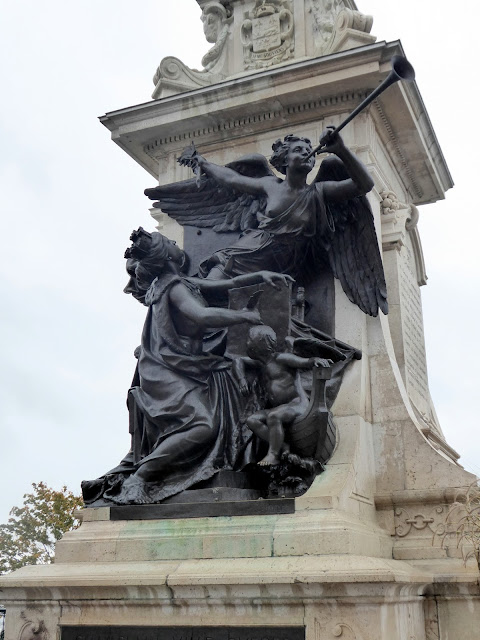Captain James Cook
Corner Brook, Newfoundland
Canada
N 48° 57.270 W 057° 57.780
Quick Description:
A statue of British Royal Navy Captain, explorer, navigator, and cartographer Captain James Cook is located at the Captain James Cook Historical Site in Corner Brook, Newfoundland.
Long Description:
The Captain James Cook Historical Site is located on a hilltop overlooking the city of Corner Brook and the Bay of Islands. In the center of the overlook is a 7' high bronze statue of Captain James Cook. He is dressed in the attire of an 18th century British Naval captain with a high collar jacket, buttoned vest, ruffled shirt sleeves, and buckle shoes. He is standing on an 18" high rock base and holding a sexton with both hands.
A nearby historical marker describes the accomplishments of Captain James Cook in Newfoundland in English and French. The English version is inscribed:
CAPTAIN JAMES COOK, R.N.
From 1763 to 1767 Captain James Cook, R.N. directed a
survey embracing the greater part of the coast of New-
foundland. The charting of this coastline was the first
scientific, large scale, hydrographic survey to use precise
triangulation to establish outlines. It produced a
collection of charts which remained a standard for a century.
The choice of Cook to carry out Pacific exploration was
the result of his success in Newfoundland. Cook's visit to
the area on his ascent of the Humber as far as Deer Lake
was part of the first serious attempt to delineate the in-
land topography of Newfoundland.
James Cook was on November 7, 1728 (N.S.) in the village of Marton in Yorkshire, England. As a teenager studied algebra, geometry, trigonometry, navigation, and astronomy as a merchant ship apprentice. He rose through the merchant navy ranks and in 1755 joined the British Royal Navy as an able seaman and, in 1757, a master's mate aboard the HMS Eagle.
During the Seven Years' War, he served in North America and participated in the capture the Fortress of Louisbourg from the French, the siege of Quebec City, and the Battle of the Plains of Abraham in 1759. Thereafter, because of his talent surveying and cartography, he was assigned to map the coast of Newfoundland. The success in this endeavor led to his assignment to command a scientific voyage to the Pacific Ocean aboard the Royal Navy research vessel HMS Endeavor.
Between 1768 and 1779 he made three voyages of discover throughout the Pacific Ocean. He was killed in a skirmish with native Hawaiians on February 14, 1779 and was formally buried at sea.

























